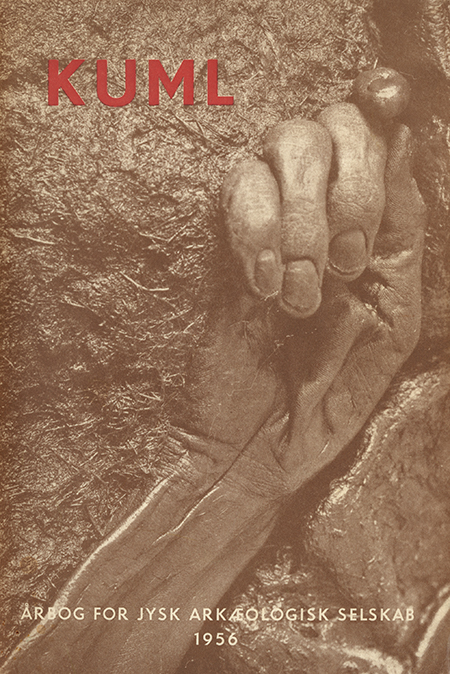Rekognoscering på Qatar
DOI:
https://doi.org/10.7146/kuml.v6i6.97302Keywords:
qatar, reconnaissance, rekogniseringAbstract
RECONNAISSANCE IN QATAR
As it appeared probable that the traces of human habitation during the Old Stone Age which had been demonstrated so abundantly by the Danish Archeological Bahrain-Expedition in the desert areas of Bahrain 1) could also be followed on the mainland of Arabia, a preliminary reconnaissance on the peninsula of Qatar was carried out by T. G. Bibby and the present author in the period 18th-2lst March 1956.
The Ruler of Qatar, His Highness Shaikh Ali bin Abdullah Al-Thani, graciously gave permission for such an investigation, the arrangements being made through the friendly mediation of his Adviser, Geoffrey M. Hancock. That it was possible to achieve a positive result of our journey in the few days which were available was due in large measure to the generous assistance which we received from many sides. Thus we owe a debt of gratitude to the General Manager of the Qatar Petroleum Company, P. R. A. Ensor, for arranging at short notice our journey to and from Qatar, and for accommodation during our stay, and to the Chief of Police in Qatar, Ronald Cochrane, for provision of transport and guides. In Dukhan we were also greatly assisted by the local knowledge of two keen antiquarians, Geoffrey David and Gordon Payne, on the staff of the Qatar Petroleum Company.
The stony desert of Qatar's broad peninsula projects northwards from the Arabian mainland, covering the southeast flank of Bahrain. It is near enough to Bahrain to be seen from there in clear weather as a light violet line above the cobalt blue waters of the gulf; and in the dark of the nights the southeast heavens of Bahrain are lit by the rows of dark-red flaming oil fires along the west coast of the peninsula of Dukhan. Only an archipelago a good 30 kms. across separates the two independent shaikhdoms.
The peninsula of Qatar, which comprises the principality, is about 80 kms. wide for the greater part of its length from north to south of 180 kms., and it therefore covers an area of well over 10,000 sq. kms. It has little more than one inhabitant per sq. km. Its settled population, Arabic-speaking, live in a number of small villages along the east coast, while the brown tents with their white stripes of the Bedouin are to be found here and there in the interior of the peninsula (Fig. 1). The terrain is gently rolling, open and waste, with sparse growths of grass and bushes in the hollows between the wide stony hills. The structure is, as in Bahrain, dominated by the strata of Eocene limestone.
Clearly, in the few days available to us it was only possible to make a very schematic investigation of this large area. From Dukhan on the west coast we drove by the inland route to Qalat Murair at the northwest of the peninsula, and from there eastwards to the town of Khor on the east coast. We then followed the coast south to Umm Said and thence struck westward via Hazm Berich and Karanah back to Dukhan. On this long route the only prehistoric site discovered was a group of stone cairns near Al-Rufaigh about 30 kms. northeast of Dukhan. These grave-mounds may well be contemporary with the prehistoric mounds of Bahrain and thus to be dated to the third millenium BC; they presumably stand in association with a settlement of the same date by the inlet of Dohat al Hussain, which was not visited.
Artifacts of Old Stone Age date, of the same type as those found on Bahrain, were discovered on two sites about ten kms. north of Dukhan, on the level ground inland from the point of Ras Uwainat Ali. Here the high outcrop of the point has sheltered the open coastland to the south, producing a location typical of the camping grounds of hunting cultures the world over. Except for wind-blown dunes the land surface lies no more than a couple of metres above high-water; and between these dunes, where the wind has exposed the original ground surface, lie flint chippings in their thousands, discards from the fashioning of flint tools on two sites only some two hundred metres apart.
The material is the same flint as is characteristic for the palaeolithic sites of Bahrain, varying from a dark brown to a light, non-translucent flint 2). On both sites coarse cores and flakes predominated, blades being entirely absent. The most common artifact was a thick flake with a roughly saw-toothed edge 3), while each of the sites produced a single specimen resembling in shape and retouche a little hand-axe, but with the one edge struck off.
These two settlement sites, and the gravemounds recorded above, give good reason for an extended archeological investigation in Qatar. For this purpose the Government of Qatar and the Qatar Petroleum Company have already made grants which will make a continuation possible in the spring of 1957.
P. V. Glob
Downloads
Published
How to Cite
Issue
Section
License
Fra og med årgang 2022 er artikler udgivet i Kuml med en licens fra Creative Commons (CC BY-NC-SA 4.0).
Alle tidligere årgange af tidsskriftet er ikke udgivet med en licens fra Creative Commons.


